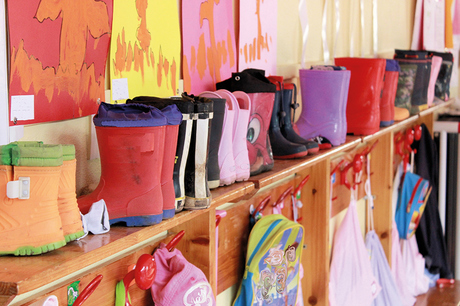
Choosing a new nursery or other kind of group setting for your child is a big step, especially if you do not know your area well.
FIVE THINGS YOU NEED TO KNOW
Here are five things that all parents need to know about choosing a new setting for their child:
1. Start early
It is worth being as organised as possible when it comes to choosing a setting. Leaving things until just a couple of weeks before your child is due to start can backfire and make the process feel more stressful than it needs to be. It takes time to visit different settings and also to get a feel of what is available.
2. Think about your child’s temperament
A good starting point is to think about your child’s temperament at this time in their life. While some aspects of your child’s personality are still developing, you will already have picked up some clues about where your child seems happiest. If your child is extroverted and curious, they may enjoy a bustling setting. On the other hand, if your child likes quiet, calm and is a creature of habit, you may look for something very different.
3. Visit during a normal day
While most settings will offer open days or evenings, it is important to take time to visit a setting when it is actually full of children. Look to see how happy the children seem and whether or not you like the way the adults talk to them. Think about the ethos of the setting. How does it correspond to your expectations, and can you imagine your child being happy in this space?
4. Assess inspection reports carefully
As well as using your own eyes and ears, you can also look to see what independent inspectors have written about the setting. This is far from being a foolproof method of choosing a setting. Inspection grades can go up as well as down during the time that your child is in a setting. Inspectors are also basing their judgements on very specific criteria and are only seeing the setting in action for a very short burst of time. Having said that, the inspection report may flag up some points for you to consider.
5. Don’t be afraid to ask questions
Choosing the right setting for your child is important and so be proactive when it comes to finding out information. It can be worth making a list of things that are important to you and your child. This can be anything from the setting’s approach to mealtimes through to how the setting supports reading and mathematics. Good settings should be open about what they do and will be happy to show you everything, from policies down to the toilets.

COMMON QUESTIONS AND DILEMMAS
There are a few recurring questions that parents often ask when they are looking at a new setting for their child. Here are a few ones that may help you:
Should I trust what other parents say?
Word of mouth can be useful, but two parents with children of the same age at the same setting can have very different experiences. This is partly down to expectations but also to the differences between children. At the end of the day, you have to make the choice based on what you see and feel when you visit. If you do take into account other parents’ views, give more weight to the opinion of parents whose parenting style and expectations are akin to yours.
One setting is near where we live, but the other feels like it will suit our daughter better. Which one should I choose?
While a setting that is close by is great in some ways because of the proximity of friends and convenience, you should go for the one that feels right for your child. A setting on the doorstep will not make up for an unhappy child or one that it is not thriving.
My daughter and her step-sister are the same age, but they don’t get on. I am not sure whether they should go to the same nursery.
With families coming in all shapes and sizes, getting it right for each family member can be tricky. It will be worth talking to the setting that you have in mind and ask for their advice. It might be that they can be put in separate groups or that support is given for them to build their relationship. At the end of the day, think about what will be best for each child in terms of their temperament as well as their ongoing relationship. Some families, for example, opt for separate settings in such cases so the children can have their own space.
Should I let my child choose their early years setting?
In my view, the responsibility as to where your child goes must be mainly yours. This is because as an adult you have more experience of the world and can plan for the long term. This is something that young children find difficult and so are likely to be swayed by more arbitrary factors such as the colour of the pushchairs. Having said that, it is always worth watching your child’s reaction towards staff members to help you make a final decision.
INSPECTION REPORTS 
Finally, while we have mentioned inspection reports, it can be tricky to locate them. Each country in the UK has its own system of inspecting settings, with some inspecting education and care outcomes separately.
All of the inspectorates have a website where you can enter the postcode of a setting:
- Ofsted in England looks at both care and education outcomes (www.ofsted.gov.uk)
- For Scotland, begin by looking at Education Scotland (www.educationscotland.gov.uk)
- For Wales, visit Estyn (www.estyn.gov.wales)
- For Northern Ireland, see the Education Training Inspectorate (https://www.etini.gov.uk)
- In addition, there is a separate inspectorate for private schools called ISI (www.isi.net).









